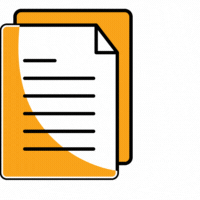Pengaruh Faktor Kehamilan terhadap Panjang Badan Bayi sebagai Indikator Awal Risiko Stunting di Kabupaten Kediri
The Effect of Pregnancy Factors on Infant Body Length as an Initial Indicator of Stunting Risk in Kediri Regency
DOI:
https://doi.org/10.35473/ijm.v8i1.3911Keywords:
Stunting, ANC, Status Gizi Ibu, Tablet Zat Besi, Pola MakanAbstract
Stunting is a chronic nutritional problem that is rooted in the womb. Factors such as maternal nutritional status, iron tablet consumption, ANC visits, and diet play a role in the baby's body length at birth, which is an early indicator of stunting risk. Analyze the factors that affect the baby's body length at birth as a predictor of stunting risk. This cross-sectional quantitative study was conducted in January – March 2024, involving 250 postpartum mothers on the first day at several TPMBs and hospitals with purposive sampling. Data were collected through questionnaires and checklists of KIA books and analyzed using multiple linear regression tests. The average body length of babies is 47.2 ± 2.1 cm, with 35% of babies at risk of stunting. Bivariate analysis showed that maternal nutritional status (p = 0.002), iron tablet consumption (p = 0.005), ANC (p < 0.001), and diet (p = 0.001) had a significant relationship with infant body length. Multivariate analysis showed that ANC had the greatest influence (B = 0.25, p < 0.001), followed by diet, maternal nutritional status, and iron tablet consumption (R² =0.52). Adequate ANC, good nutritional status, a balanced diet, and adherence to the consumption of iron tablets play a role in preventing babies born with a body length at risk of stunting. Optimization of ANC services and nutrition education for pregnant women is needed to prevent stunting from an early age
Abstrak
Stunting merupakan masalah gizi kronis yang berakar sejak dalam kandungan. Faktor seperti status gizi ibu, konsumsi tablet zat besi, kunjungan ANC, dan pola makan berperan dalam panjang badan bayi saat lahir, yang menjadi indikator awal risiko stunting. Menganalisis faktor-faktor yang mempengaruhi panjang badan bayi saat lahir sebagai prediktor risiko stunting. Penelitian kuantitatif cross-sectional ini dilakukan pada Januari – Maret 2024, melibatkan 250 ibu nifas hari pertama di beberapa TPMB dan rumah sakit dengan purposive sampling. Data dikumpulkan melalui kuesioner dan checklist buku KIA serta dianalisis menggunakan uji regresi linear berganda. Rata-rata panjang badan bayi 47,2 ± 2,1 cm, dengan 35% bayi berisiko stunting. Analisis bivariat menunjukkan bahwa status gizi ibu (p = 0,002), konsumsi tablet zat besi (p = 0,005), ANC (p < 0,001), dan pola makan (p = 0,001) memiliki hubungan signifikan dengan panjang badan bayi. Analisis multivariat menunjukkan bahwa ANC memiliki pengaruh terbesar (B = 0,25, p < 0,001), diikuti pola makan, status gizi ibu, dan konsumsi tablet zat besi (R² = 0,52). ANC yang cukup, status gizi baik, pola makan seimbang, dan kepatuhan konsumsi tablet zat besi berperan dalam mencegah bayi lahir dengan panjang badan berisiko stunting. Optimalisasi layanan ANC dan edukasi gizi ibu hamil diperlukan untuk pencegahan stunting sejak dini
Downloads
References
Bhutta, Z.A., Das, J.K., Rizvi, A., Gaffey, M.F., Walker, N., & Horton, S. (2020) ‘Evidence-based interventions for optimal maternal and child nutrition’, Lancet, 395(10234), pp. 2100–2116.
Black, R.E., Victora, C.G., Walker, S.P., Bhutta, Z.A., Christian, P., de Onis, M., et al. (2022) ‘Maternal and child nutrition: building momentum’, Lancet, 397(10293), pp. 1499–1511.
Dewey KG, B.K. (2022) ‘Long-term consequences of early-life nutrition’, Annu Rev Nutr, 42, pp. 37–64.
Harding, K.L., Aguayo, V.M., & Webb, P. (2023) ‘The impact of prenatal supplementation programs on child growth.’, J Nutr, 152(1), pp. 23–31.
Kassebaum, N.J., Arora, M., Barber, R.M., et al. (2023) ‘Global nutrition policies: Challenges and solutions. BMJ Glob Health.’, 8(2), p. e009234.
Kementerian Kesehatan RI (2022) Laporan prevalensi stunting.
Koshy, A., et al (2022) ‘Maternal health and child nutrition: A comprehensive review of the evidence.’, Global Health Action, 15(1), pp. 1–12.
Mariyatun, M., Herdiana, H., & Rini, A.S. (2023) ‘Hubungan Pola Nutrisi, Sikap dan Dukungan Keluarga Terhadap Kejadian KEK pada Ibu Hamil di Puskesmas Simpang Teritip Tahun 2023.’, Jurnal Riset Ilmiah, 2(10), pp. 4131–4142.
Naylor, A.. (2023) ‘Quality of prenatal care and maternal fetal attachment among women in a low-resource setting: A cross-sectional study.’, The Journal of Obstetrics and Gynaecology Canada, 45(4), pp. 456–463.
Nuraeni, H., & Haniarti, F. (2021) ‘Pengaruh Status Sosial Ekonomi dan Pola Makan Terhadap Status Gizi Ibu Hamil di Wilayah Kerja Puskesmas Mattombong Kecamatan Mattiro Sompe Kabupaten Pinrang.’, Jurnal Ilmiah Manusia Dan Kesehatan, 4(2), pp. 1–10.
de Onis, M., Blössner, M., & Borghi, E. (2022) ‘The global burden of child stunting.’, Lancet Glob Health, 1(4), pp. e523–e530.
De Sanctis, V., et al. (2021) ‘he role of nutrition in the prevention of stunting in children: A review’, Journal of Pediatric Endocrinology and Metabolism, 34(3), pp. 245–256.
Saputri, R.A. (2024) ‘Kebijakan Percepatan Penurunan Stunting.’, Jurnal Kesehatan Masyarakat, 9(1), pp. 1–10.
Sari, D.P., & R. (2023) ‘Pengaruh Kunjungan Antenatal Care (ANC) terhadap Panjang Badan Bayi Lahir di Puskesmas X’, Jurnal Kesehatan Masyarakat, 9(1), pp. 45–52.
Schneider, M. (2023) ‘The determinants of child stunting and shifts in the growth pattern of children: A systematic review.’, Journal of Economic Surveys, 37(2), pp. 123–145.
Victora, C.G., Bahl, R., Barros, A.J.D., Franca, G.V.A., Horton, S., & Krasevec, J. (2021) ‘Maternal and child undernutrition and overweight in low-income and middle-income countries’, Lancet, 398(10294), pp. 1160–1175.
WHO (2022) Stunting in a nutshell. Geneva: World Health Organization
Downloads
Published
How to Cite
Issue
Section
License
Copyright notice:
- Authors retain copyright and grant the journal right of first publication with the work simultaneously licensed under a Creative Commons Attribution License that allows others to share the work with an acknowledgement of the work's authorship and initial publication in this journal.
- Authors are able to enter into separate, additional contractual arrangements for the non-exclusive distribution of the journal's published version of the work (e.g., post it to an institutional repository or publish it in a book), with an acknowledgement of its initial publication in this journal.


